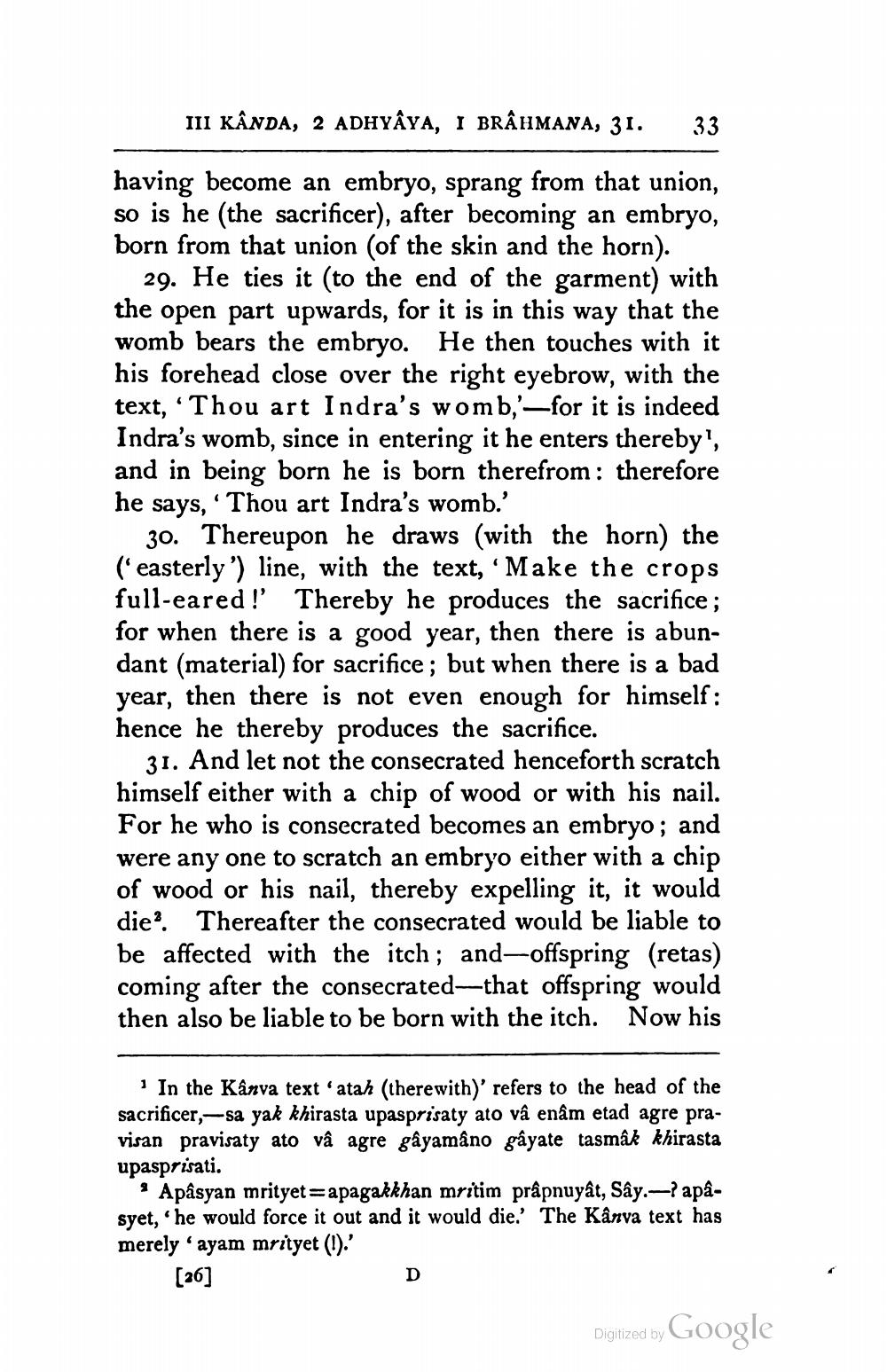________________
III KÂNDA, 2 ADHYÂYA, I BRAHMANA, 31. 33
having become an embryo, sprang from that union, so is he (the sacrificer), after becoming an embryo, born from that union (of the skin and the horn).
29. He ties it (to the end of the garment) with the open part upwards, for it is in this way that the womb bears the embryo. He then touches with it his forehead close over the right eyebrow, with the text, 'Thou art Indra's womb,'-for it is indeed Indra's womb, since in entering it he enters thereby1, and in being born he is born therefrom: therefore he says, Thou art Indra's womb.'
C
30. Thereupon he draws (with the horn) the ('easterly') line, with the text, 'Make the crops full-eared!' Thereby he produces the sacrifice; for when there is a good year, then there is abundant (material) for sacrifice; but when there is a bad year, then there is not even enough for himself: hence he thereby produces the sacrifice.
31. And let not the consecrated henceforth scratch himself either with a chip of wood or with his nail. For he who is consecrated becomes an embryo; and were any one to scratch an embryo either with a chip of wood or his nail, thereby expelling it, it would die. Thereafter the consecrated would be liable to be affected with the itch; and-offspring (retas) coming after the consecrated-that offspring would then also be liable to be born with the itch. Now his
In the Kâzva text 'atah (therewith)' refers to the head of the sacrificer,-sa yak khirasta upasprisaty ato vâ enâm etad agre pravisan pravisaty ato vâ agre gâyamâno gâyate tasmâk khirasta upasprisati.
apâ
* Apâsyan mrityet=apagakkhan mritim prâpnuyât, Sây. syet, 'he would force it out and it would die.' The Kânva text has merely ayam mrityet (1).'
"
[26]
D
Digitized by
Google




